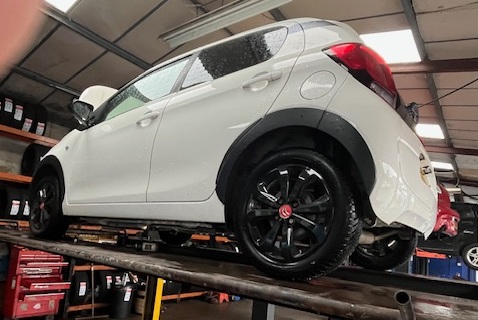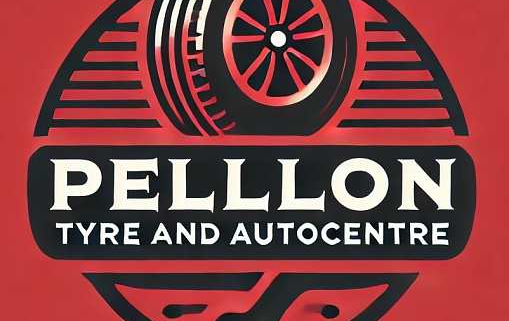citroen-c1-starting-problem-halifax
citroen-c1-starting-problem-halifax

citroen-c1-starting-problem-halifax
Citroën C1 Starting Problems – A Simple Fix at Pellon Tyres, Halifax
We had a tidy little Citroën C1 brought into the workshop the other morning, and the customer’s main gripe was that the car just wouldn’t start. You know how it goes – turn the key and all you get is a weak whirr and the dreaded dashboard lights flickering like a Christmas tree.
The first thing we always do in these cases is check the battery, as nine times out of ten it’s the culprit. But this one tested out just fine, showing a healthy voltage and holding charge nicely. That meant something else was up – and sure enough, a quick check with the multimeter soon told us the alternator had given up the ghost.
Now, for anyone not too familiar with the bits under the bonnet, the alternator is what keeps the battery charged once the engine’s running. It’s a small but mighty bit of kit, converting the engine’s mechanical energy into electricity to run all the car’s electrics – lights, heater, radio, wipers, the lot. When it fails, the battery doesn’t get charged, so before long you’re left with a car that refuses to start, no matter how new the battery might be.
Our mechanic Alex whipped the old alternator off, and we fitted a quality replacement unit. A quick test showed the charging voltage was spot on, the battery light went out, and the little C1 was purring again. The customer was back on the road the same day – job sorted!

How We Test Batteries and Alternators: citroen-c1-starting-problem-halifax
When a car arrives with a starting problem, we don’t just guess – we test. At Pellon Tyre and Autocentre in Halifax, we use a professional battery tester that measures both voltage and cranking power. That tells us instantly if the battery has enough life left in it.
Once we’ve ruled out the battery, the next step is to check the alternator output. With the engine running, we measure the voltage across the battery terminals – it should be around 14 volts if the alternator is charging properly. Anything much lower than that, and we know the alternator is either worn out or the internal regulator has failed.
We also look at the alternator belt, which can sometimes slip or fray with age. If the belt is loose, it won’t spin the alternator fast enough, causing undercharging. In this Citroën’s case, the belt was fine, so the alternator itself was the clear suspect.
Common Electrical Issues on Small City Cars: citroen-c1-starting-problem-halifax
The Citroën C1, Peugeot 107, and Toyota Aygo all share the same basic platform, so they also share a few common problems. Apart from alternators, we often see issues like corroded battery terminals, worn starter motors, and occasionally blown fuses that can mimic more serious electrical faults.
Because these are small, light cars, the engines don’t have massive batteries or charging systems – so even a slightly weak alternator can quickly drain the battery, especially if the car’s used mainly for short trips around Halifax or up to the supermarkets in Pellon. In winter, with heaters, wipers and lights all on, the strain can be enough to tip a marginal alternator over the edge.
We always remind our customers that if the battery warning light comes on while driving, it’s best not to ignore it. It’s the car’s way of saying “I’m not charging properly.” Carry on too long and you’ll soon lose power to vital systems like power steering and brakes.
A Bit of Citroën C1 History
The Citroën C1 first appeared in 2005 as part of a clever partnership between Citroën, Peugeot and Toyota. All three manufacturers needed a small, efficient city car to meet growing demand for low-running-cost vehicles, and rather than reinvent the wheel separately, they teamed up to build a shared model.
The cars – the C1, the Peugeot 107, and the Toyota Aygo – were all produced together in a state-of-the-art factory in the Czech Republic. It was a bold move that worked brilliantly, as each brand could give the car its own styling and trim while sharing the same reliable mechanical parts.
Over the years, the C1 has become a familiar sight on British roads, loved for its nimble handling, low road tax, and excellent fuel economy. They’re particularly popular with new drivers, commuters, and anyone looking for a cheap-to-run second car. Here in West Yorkshire, they’re perfect for the stop-start traffic and steep streets we all know so well.
The second generation, launched in 2014, brought a modern facelift and even more quirky colours, but the core idea stayed the same – keep it light, fun, and simple.
Keeping Halifax Moving: citroen-c1-starting-problem-halifax
We see a fair few of these little cars at Pellon Tyres – whether it’s for MOTs, servicing, or a bit of TLC like this alternator replacement. Most of the time, they’re easy to fix and keep going for years with regular maintenance.
If your own C1, 107, or Aygo starts giving you trouble starting, don’t assume the worst. It might not be the battery at all – it could just be that the alternator isn’t doing its job. Bring it in to us for a quick check, and we’ll soon tell you what’s what.
So, another happy customer, another small car back on the road, and another reminder that here in Halifax, we’re proud to keep everything from big vans to tiny city cars running just as they should.
- All-Season tyres versus winter tyres
- Top Class Car for MOT Test
- Audi A3 for New Front Discs
- BMW Mini Wheel bearing-Or just tyre noise?
- Corsa Broken Spring Replaced
